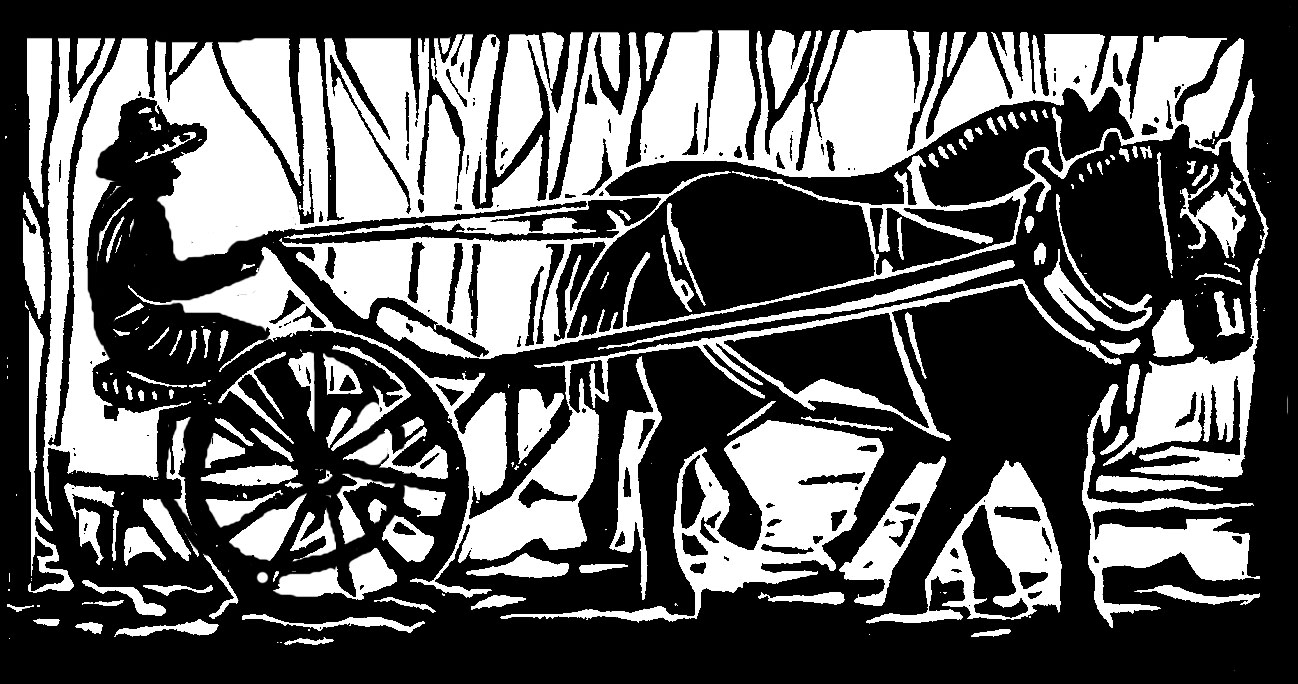He's a fine cat. He's been with us a long, long time, longer than our draft horses, our farm, our teenage daughter. He's caught more than his share of mice and voles and moles and rats and squirrels and chipmunks and birds. And he has made a fine reputation for himself as a scratchy-bitey farm cat.
As a kitten, he was so vigorous and gleeful in his pouncing on the feet or any other moving body part under the blankets that we had to lock him out of the bedroom. Then, in the night, when I had to get up to visit the bathroom . . . I knew it was coming, but I didn't know when. I tiptoed across the floor, holding my breath in the dark. Then . . . Pounce! I would squawk, heart pounding, while the kitty wrapped his paws firmly around my ankle. I shuffled along, the kitty happily sliding across the wooden floor, gnawing on my leg. Our kitty loved this game. I found it a little daunting.
The kitty, for his part, found our various moves daunting: from the first pleasant house of ankle-gnawing to the second terrible place of four dreadful dogs to the third so-so place with its startling appearance of a team of draft horses and a baby. Then on to the fourth place, our vegetable farm in New Hampshire, where our scratchy-bitey cat came into his glory.
He wondered from haymow to garden to field to farmhouse, catching rodents. He slept where he chose, ate what he chose, and scratched and bit whom he chose. When we started our CSA garden, our kitty ran up to the CSA members with great enthusiasm. He rubbed his head against legs. A hand descended, ready to pet. The hand petted; a voice crooned. The kitty put his ears back, swished his tail, hissed and spit and scratched and bit, and ran off, apparently insulted by the whole proceeding.
We began to issue kitty warnings. This is a scratchy-bitey kitty, we'd say. He might seem very friendly, we'd say. Consider yourself warned, we'd say. Quickly people learned about our kitty, and their children learned too, with occasional tears.
Things went on fairly calmly until, a few years later, we got another kitty: another all black kitty, a very friendly, lovey-dovey kitty.
“Uh-oh,” CSA members would say, “Which one is that?” as an enthusiastic black kitty ran over.
“Look at the toes,” we'd advise. “The friendly one has lots of toes.”
As one member said, “By the time I figure out the toes, it's too late.”
Sadly, our second black kitty disappeared one day, after only a year with us. Then it was quite clear again just who the resident black kitty was.
Over the years, our scratchy-bitey black kitty has risen to new heights. For a while he decided that sleeping on the dark shelf where members reach in blindly for plastic bags was a fine idea. He didn't like his naps disturbed, needless to say. Then he began to believe that taking a nap on a tray of cucumbers that we had set aside in the house, ready for pickling, was appealing. We discouraged this strongly.
Next, one day in the shed, as a farmer came to greet a CSA member, the latter said, “Boy, am I glad to see you! I started to reach in the bin for my lettuce, but your black cat is sitting on the top of the cloth. I took my hand out again, fast!”
“Oh, geesh,” said the farmer apologetically. “I don't know why anyone would want to lie on a wet cloth on top of lettuce. Come on out of there, you naughty kitty!”
From then on, we made Scratchy-Bitey stay inside on harvest day. He seemed happy to come back to taking naps on our pickling cucumbers.
But as he gets older, our fine kitty is more tolerant than he used to be. Sometimes he asks us to pick him up and pet him. He even purrs, a small rusty purr.
One morning, when I am holding and petting the kitty, I say to my fellow farmer, “I feel a little more confident with him, when he's actually purring,”
My fellow makes a wry face. “Sometimes he's been purring when he scratched and bit me.”
I draw my head back from the kitty's teeth and claws.
“Is that true?” I say to Ol' Scratchy-Bitey.
The kitty purrs.
Originally published in the Monadnock Shopper News, Feb 17-23, 2016

